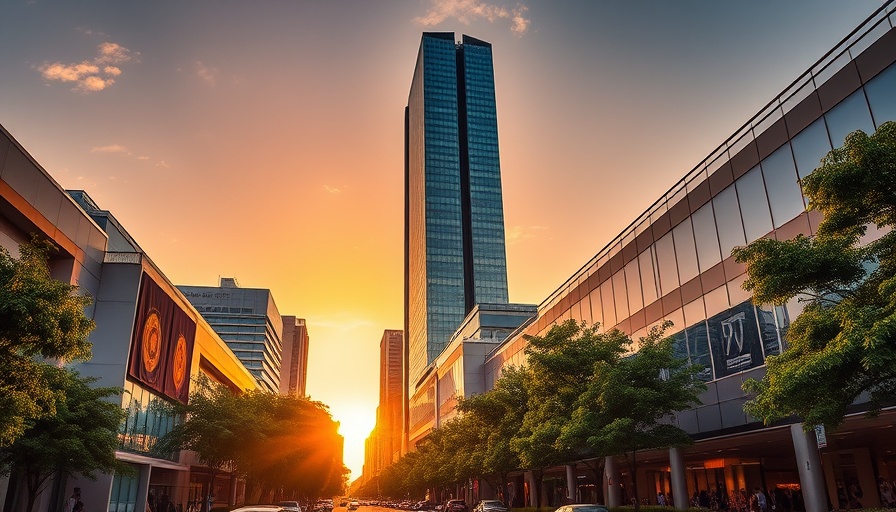
A Tower of Controversy: Tracing the Failed Ambitions of the Hickeys
In a neighborhood renowned for its serene coastal vibes, plans for a 50-story skyscraper have unraveled into a tale of contention, dreams, and impending financial downfall. The plan, pitched by John and Raelynn Hickey, aimed to transform the Outer Sunset at 2700 Sloat Blvd. into a bustling nexus of tall buildings, but faced formidable resistance from locals who saw it as an affront to their community.
Originally, the Hickeys sought to exploit a state density bonus law to bring their ambitious vision to life. Despite their enthusiasm for high-density housing, they were met with rejection from city planners, forcing them to scale down their ambitions to a more modest, 25-story proposal. Even this lesser plan was ultimately rejected last month, culminating in the decision to file for bankruptcy. The documents filed indicate that the Hickeys now require debt relief between $10 million to $50 million, with creditors including the architects and attorneys involved in the project.
The Community’s Backlash: A Lesson in Local Engagement
From its inception, the Hickeys’ proposal generated fierce backlash from the surrounding community. Thousands of residents banded together to protest the project, signing petitions and rallying against what they perceived as a ‘spite project’—a venture motivated less by community needs and more by the Hickeys' personal vendetta against city planning decisions. Critics labeled the skyscraper as grossly misaligned with the character of the Outer Sunset, which has long been typified by lower, more modest structures, serving as a respite from the bustling downtown San Francisco.
This backlash serves as a powerful reminder of the importance of local voices in urban planning. Engaged citizens, often clear on their community values, can hold significant sway in decisions impacting their neighborhood, emphasizing the need for developers to prioritize community collaboration over ambition.
Lessons from Past Ventures: The Hickeys’ Checkered History
The Hickeys are not newcomers to controversy. John Hickey’s history in real estate development is marred by scandal. Previously, he pitched plans for massive residential towers in San Francisco's India Basin, but those plans collapsed after legal troubles linked to a Ponzi scheme surfaced, leading to his imprisonment. This backstory of unchecked ambition and governmental distrust becomes a crucial part of the narrative surrounding their latest failed venture, with many wondering if the past truly defines the present.
This raises essential questions about trust in development: How much weight should prior transgressions carry in today’s housing debates? Economic pressures drive the desire for cutting-edge housing developments, yet those developers must also forge relationships based on integrity and trust within their target communities.
The Bigger Picture: Housing Crisis and its Implications
The Hickeys' ambitious project unfolded against the backdrop of California's housing crisis, where the demand for affordable housing vastly outstrips supply. Despite the urgency of addressing housing shortages, the resistance to high-rise developments like the proposed tower reflects deep tension between growth and preserving neighborhood identity.
The juxtaposition of NIMBY (Not In My Backyard) sentiment against the pressing need for housing embodies a larger societal dilemma—how to balance community character and openness to new developments. Even among developers, there is a cautious realization that public sentiment can't be overlooked; a unified community perspective is essential for any successful project.
Future Trends in Urban Development: Finding a Middle Ground
What does the failure of the Hickeys' skyscraper mean for future urban development in San Francisco and similar cities? As cities grapple with increasing populations and housing demands, there needs to be a pivot towards more collaborative planning processes. Initiatives that genuinely engage local residents from the outset could mitigate tensions and foster a sense of shared vision. The future may very well depend on architects and developers learning to work with, rather than against, the communities they aim to transform.
As discussions about California’s housing continue to evolve, it is crucial for urban developers, policymakers, and residents to engage in proactive dialogues that prioritize inclusivity and community needs. This might just be the key to mitigating fierce resistance and facilitating the kind of innovative housing solutions that everyone can rally behind.
Conclusion: The Call for Informed Community Engagement
While John and Raelynn Hickey's tale may close with financial strife, the broader implications resonate throughout California. As a community, it is vital to learn from the failures of projects that ignore local voices. Engage with your neighborhood discussions, understand the legislation at play, and advocate for developments that meet both housing needs and preserve the character of your community.
Will the Hickeys be mere cautionary figures in San Francisco's development dialogue, or will they prompt a charge toward more conscious collaborations in housing? Only time will tell, but the actions of citizens today will shape the communities of tomorrow.
 Add Row
Add Row  Add
Add 




Write A Comment